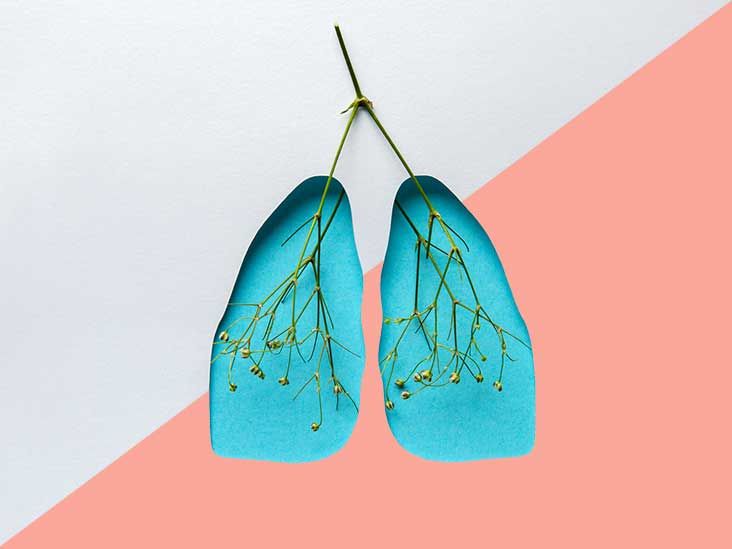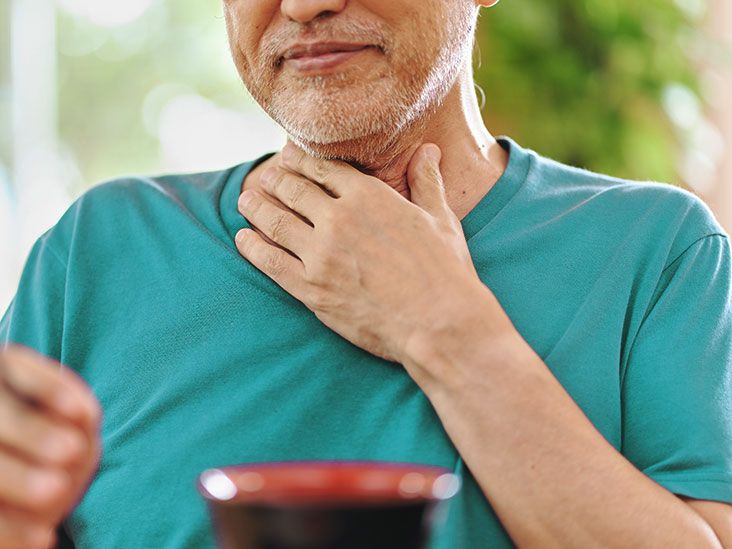Key takeaways
- COPD is a group of progressive lung diseases that includes emphysema and chronic bronchitis. Despite affecting an estimated 32 million people in the United States, as many as half are unaware they have it.
- The main symptoms include shortness of breath, wheezing, chest tightness, chronic cough with or without mucus, frequent respiratory infections, and lack of energy, which typically start mild but worsen over time.
- Most people with COPD in the United States are at least 40 years old and have a history of smoking, making smoking cessation a critical part of treatment along with medications, oxygen therapy, and lifestyle changes
Chronic obstructive pulmonary disease, commonly referred to as COPD, is a group of progressive lung diseases.
An estimated 32 million people in the United States have COPD. As many as half are unaware that they have it.
These diseases include emphysema and chronic bronchitis. Many people with COPD have both.
- Emphysema slowly destroys air sacs in your lungs, interfering with blood flow.
- Bronchitis causes inflammation and narrowing of the bronchial tubes, which allows mucus to build up.
Untreated COPD can lead to a faster progression of the disease, heart problems, and worsening respiratory infections.
Keep reading to learn about the symptoms, causes, and how doctors treat COPD.
COPD makes it harder to breathe. Symptoms may be mild at first, and you might have shortness of breath. As it progresses, symptoms can become more constant to the point where it can become increasingly difficult to breathe.
You may experience wheezing and tightness in the chest or have excess sputum (saliva and mucus) production. Some people with COPD have acute exacerbations, which are flare-ups of severe symptoms.
Early symptoms
At first, symptoms of COPD can be quite mild. You might mistake them for a cold. Early symptoms include:
- occasional shortness of breath, especially after exercise
- mild but recurrent cough
- needing to clear your throat often, especially first thing in the morning
You might start making subtle changes, such as avoiding stairs and skipping physical activities.
Worsening symptoms
Symptoms can get progressively worse over time and usually become harder to ignore. As the lungs become more damaged, you may experience:
- shortness of breath after mild forms of exercise, like walking up a flight of stairs
- wheezing, which is a type of higher-pitched, noisy breathing, especially during exhalation
- chest tightness
- chronic cough, with or without mucus
- the need to clear mucus from your lungs every day
- frequent colds, flu, or other respiratory infections
- lack of energy
In later stages of COPD, symptoms may also include:
- fatigue
- swelling of the feet, ankles, or legs
- weight loss
If you smoke or vape, your symptoms may be worse.
Emergency treatment
Immediate medical care is needed if:
- you have bluish or gray fingernails or lips, as this indicates low oxygen levels in your blood
- you have trouble catching your breath or can’t talk
- you feel confused, muddled, or faint
- your heart is racing
There are different grading systems, and one grading system is part of the GOLD classification. The GOLD classification is used to determine COPD severity and help form a treatment plan.
There are four GOLD grades based on spirometry testing:
- Grade 1: mild
- Grade 2: moderate
- Grade 3: severe
- Grade 4: very severe
This is based on the spirometry test result of your FEV1. This is the amount of air you can breathe out of the lungs in the first second of a forced expiration. The lower your FEV1, the more severe the condition. The GOLD classification also considers your individual symptoms and history of acute exacerbations.
As the disease progresses, you’re more susceptible to complications, such as:
- respiratory infections, including common colds, flu, and pneumonia
- heart problems
- high blood pressure in lung arteries (pulmonary hypertension)
- lung cancer
- depression and anxiety
Most people with COPD in the United States are at least 40 years old and have at least some history of smoking. The longer and more tobacco products you smoke, the greater your risk for COPD.
In addition to cigarette smoke, cigar smoke, pipe smoke, and secondhand smoke can cause COPD. Your risk of COPD is even greater if you have asthma and smoke.
Other causes
You can also develop COPD if you’re exposed to chemicals and fumes in the workplace. Long-term exposure to air pollution and inhaling dust can also cause COPD.
In some countries, homes may be poorly ventilated. As a result, families may breathe fumes from burning fuel used for cooking and heating. This can also cause COPD.
A genetic mutation, known as alpha-1 antitrypsin (AATD) deficiency, can also increase a person’s risk of COPD.
There is no single test for COPD. The diagnosis is based on symptoms, a physical exam, and diagnostic test results.
When you visit the doctor, it may help to bring a list of your symptoms and when and how often they occur. Be sure to let your doctor know if you:
- smoke or have smoked in the past
- have or had exposure to lung irritants on the job or elsewhere
- have exposure to a lot of secondhand smoke
- have a family history of COPD
- have asthma or other respiratory conditions
- take over-the-counter (OTC) or prescription medications
Exams and tests
During the physical exam, a doctor uses a stethoscope to listen to your lungs as you breathe. Based on this information, your doctor may order additional tests to get a more complete picture:
- Pulmonary function testing: This type of testing may include spirometry, assessment of lung volumes, and assessment of diffusing capacity. These are noninvasive tests to assess overall lung function. During the test, you’ll take a deep breath and blow into a tube connected to the spirometer.
- Imaging tests: Your doctor may order a chest X-ray or CT scan. These images can provide a detailed look at your lungs, blood vessels, and heart.
- Arterial blood gas test: This involves taking a blood sample from an artery to measure your blood oxygen, carbon dioxide, and other important levels.
These tests can help determine if you have COPD or a different condition, such as asthma, a restrictive lung disease, or heart failure.
Medications for COPD can reduce symptoms and cut down on flare-ups. Finding the medication and dosage that works best for you may take some trial and error.
Inhaled bronchodilators
Medicines called bronchodilators help loosen tight muscles in your airways. They’re typically taken through an inhaler or nebulizer.
Short-acting bronchodilators last 4 to 6 hours and you only use them when needed. For ongoing symptoms, long-acting versions can be used daily and last about 12 hours.
For people with COPD who experience shortness of breath or trouble breathing during exercise, the American Thoracic Society strongly recommends a long-acting beta-agonist (LABA) combined with a long-acting muscarinic antagonist (LAMA).
These bronchodilators work by relaxing tightened muscles in the airways, widening them for better air passage and helping the body clear mucus from the lungs. These two types of bronchodilators can be taken in combination via an inhaler or with a nebulizer.
Here’s a list of recommended LABA/LAMA bronchodilator therapies:
- aclidinium/formoterol
- glycopyrrolate/formoterol
- tiotropium/olodaterol
- umeclidinium/vilanterol
Corticosteroids
Long-acting bronchodilators may be combined with inhaled glucocorticosteroids, but the current GOLD guidelines call for minimizing the use of inhaled corticosteroids in COPD treatment. Doctors may recommend their limited use and other treatments for people with severe symptoms and frequent exacerbations.
A glucocorticosteroid can reduce inflammation in the airways and lower mucus production.
The long-acting bronchodilator can relax the airway muscle to help the airways stay wider. Corticosteroids are also available in pill form.
Phosphodiesterase-4 inhibitors
This type of medication can be taken in pill form to help reduce inflammation and relax the airways.
The GOLD guidelines for COPD management recommend phosphodiesterase-4 inhibitors as an add-on therapy for people with persistent COPD symptoms and exacerbations despite treatment with bronchodilators and inhaled corticosteroids.
Doctors generally prescribe it for severe COPD with chronic bronchitis and a history of exacerbations.
Theophylline
This medication comes in pill form. It eases chest tightness and shortness of breath and may also help prevent COPD flare-ups.
Theophylline (Theo-24, Elixophylline, Theochron) is an older medication that relaxes the airway muscles. Because it may cause side effects, it’s generally not a first-line treatment for COPD therapy.
Antibiotics and antivirals
Doctors may prescribe antibiotics or antivirals if you develop certain respiratory infections to help you recover.
Treatment can ease symptoms, prevent complications, and generally slow disease progression. Your healthcare team may include a lung specialist (pulmonologist) and physical and respiratory therapists.
Vaccines
To lower the risk of other respiratory infections, your doctor may recommend certain vaccines, including:
- a yearly flu shot
- a COVID-19 vaccine booster
- the pneumococcal vaccine
- a tetanus booster that includes protection from pertussis (whooping cough)
Oxygen therapy
If your blood oxygen level is too low, you can receive supplemental oxygen through a mask or nasal cannula to help you breathe better. A portable unit can make it easier to get around.
Surgery
Surgery is reserved for severe COPD or when other treatments haven’t worked. These can include:
- Bullectomy: During this procedure, surgeons remove large, abnormal air spaces (bullae) from the lungs.
- Lung volume reduction surgery: This surgery removes damaged upper lung tissue and can be effective at improving breathing, but may have risks.
- Lung transplantation: This may be an option for some people. Although lung transplantation can effectively cure COPD, it has many risks.
- Endobronchial valves (EBV): This is a less invasive method of improving airflow efficiency in people with severe emphysema. These one-way valves divert inspired air to healthy lungs and away from non-functioning, damaged lungs. In 2018, an EBV device called the
Zephyr Endobronchial ValveTrusted Source was approved by the FDA and has been shown to improve lung function, exercise capacity, and quality of life for people living with severe emphysema.
COPD requires lifelong management. That means following the advice of your healthcare team and maintaining healthy lifestyle habits.
Since your lungs are weaker, you’ll want to avoid anything that might overtax them or cause a flare-up. Here’s a list of things to consider as you adjust your lifestyle.
- Avoiding smoking: If you’re having trouble quitting, speak with your doctor about smoking cessation programs. Try to avoid secondhand smoke, chemical fumes, air pollution, and dust.
- Staying active: A little exercise each day can support your overall health and your heart and lung function. It’s best to speak with your doctor about how much exercise they recommend for you before drastically changing your exercise routine.
- Eating a diet of nutritious foods: Avoiding highly processed foods high in calories and salt but low in nutrients may help support your health.
- Treating other conditions: If you have other chronic health conditions along with COPD, it’s important to manage those as well, particularly type 2 diabetes and heart disease.
- Cleaning your home: It can help to clear the clutter and streamline your home, so it takes less energy to clean and do other household tasks. If you have advanced COPD, you may need help with daily chores.
- Being prepared for flare-ups: Make sure to carry your emergency contact information with you and post it on your refrigerator. Include information about what medications you take, as well as the doses. Keep emergency numbers stored on your phone.
- Finding support: Talking to others who understand can be a relief. Consider joining a support group. The COPD Foundation provides a comprehensive list of organizations and resources for people living with COPD.
There’s no specific diet for COPD, but a healthy diet is important for maintaining overall health. The healthier you are, the more you’ll be able to help prevent complications and other health problems.
Consider eating a variety of nutritious foods from these groups:
- vegetables
- fruits
- grains
- protein
- dairy
Avoiding or limiting salt may also help, as salt causes the body to retain water, which can strain breathing.
COPD and lung cancer are linked in several ways.
COPD and lung cancer have multiple common risk factors. Smoking is the top risk factor for both diseases. Both are also more likely if you breathe secondhand smoke or are exposed to chemicals or other fumes in the workplace.
There may be a genetic predisposition to developing both diseases. Also, the risk of developing either COPD or lung cancer increases with age.
In some cases, people don’t learn they have COPD until they receive a diagnosis of lung cancer.
Having COPD doesn’t necessarily mean you’ll get lung cancer. However, it does mean that you have a higher risk. That’s another reason why, if you smoke, quitting is a good idea.
About
COPD is the third leading cause of death in the United States. More females than males die from COPD each year.
COPD generally reduces life expectancy, though the outlook varies considerably from person to person.
People with COPD who never smoked may have a modest reduction in their life expectancy, while former and current smokers are likely to have a larger reduction. However, your individual life expectancy can depend on other factors, including your overall health and the extent of lung damage.
Once you have a diagnosis, you’ll need to start seeing your doctor regularly. You’ll also need to take steps to manage your condition and make the appropriate changes to your daily life.
Treatment and lifestyle changes can help manage early symptoms of COPD and help you maintain a good quality of life for some time.
People with severe stages of COPD may not be able to care for themselves without assistance. COPD increases the risk of developing certain health conditions, including:
- respiratory infections
- heart problems
- lung cancer
- depression
- anxiety
Besides smoking, your outlook depends on how well you respond to treatment and whether you can avoid serious complications. Your doctor is in the best position to evaluate your overall health and give you an idea about what to expect.











